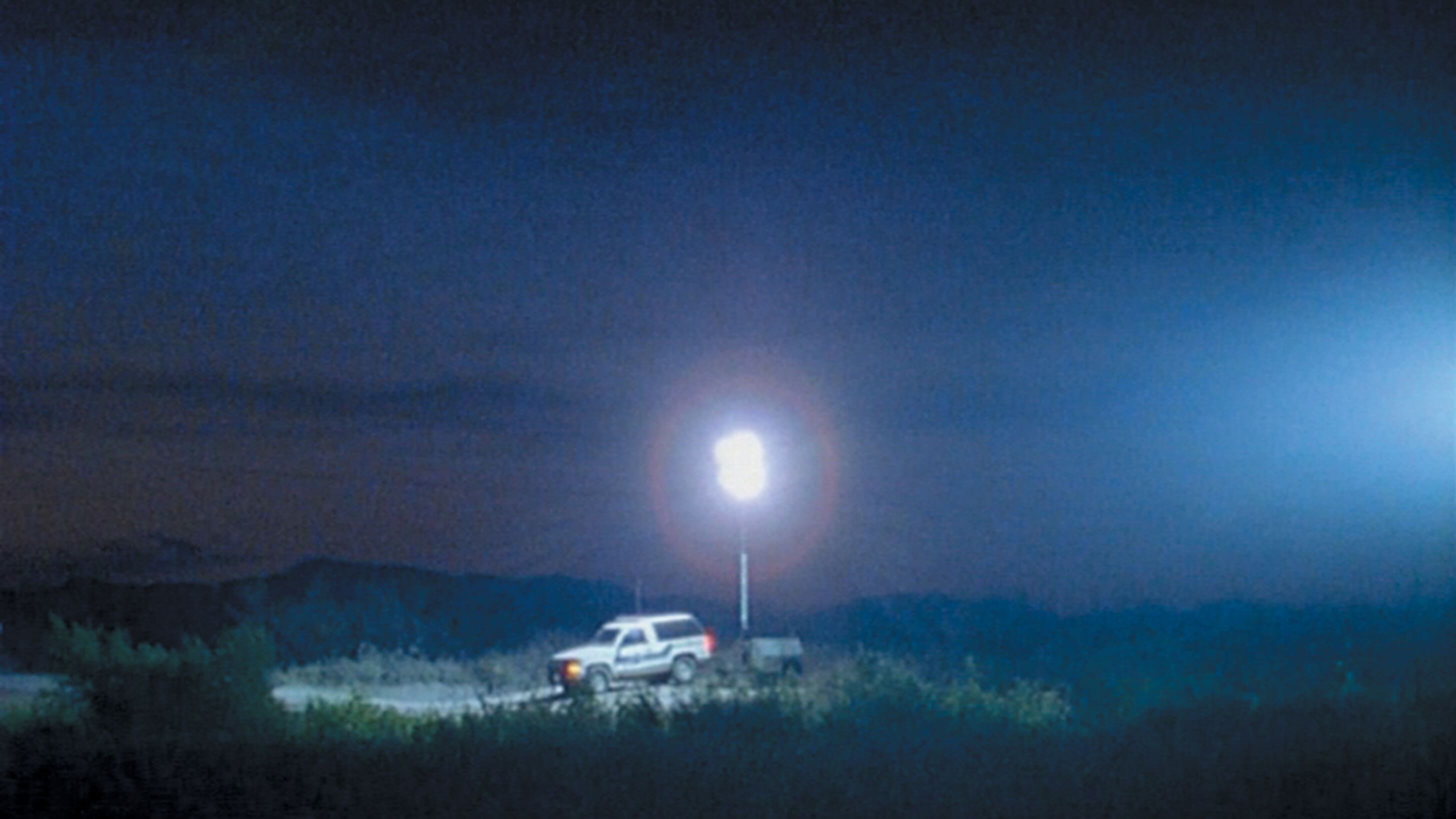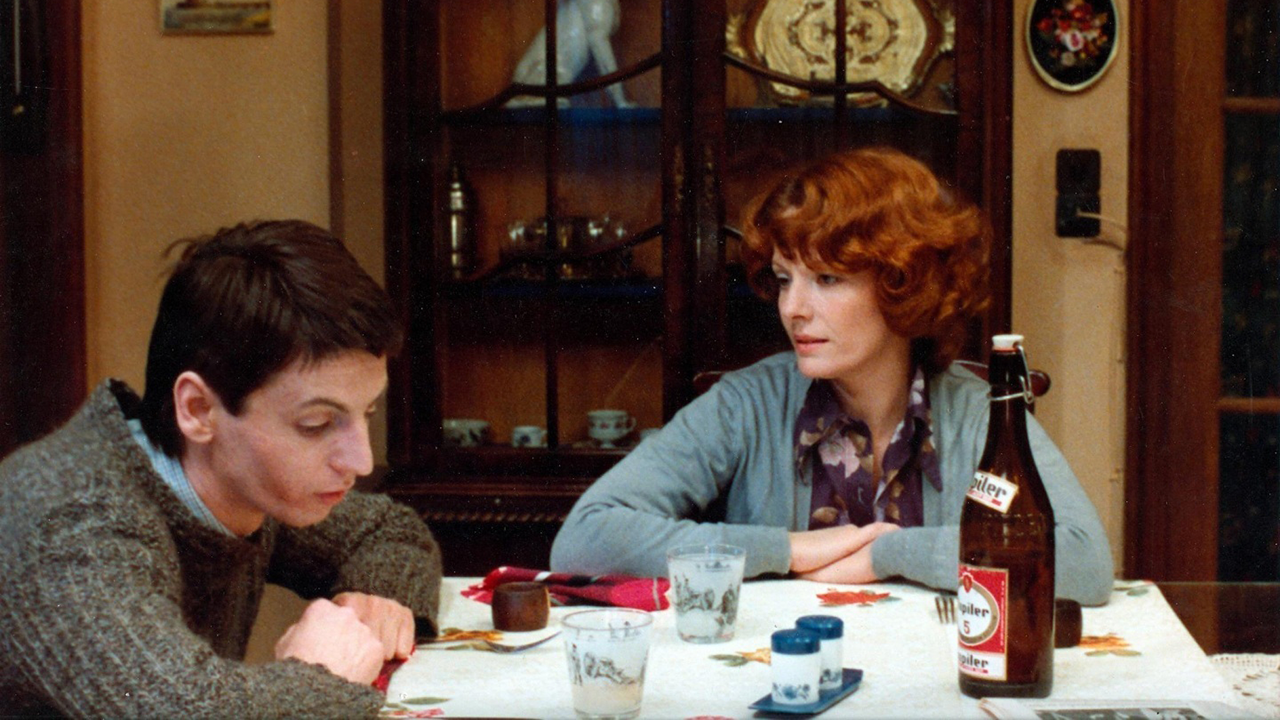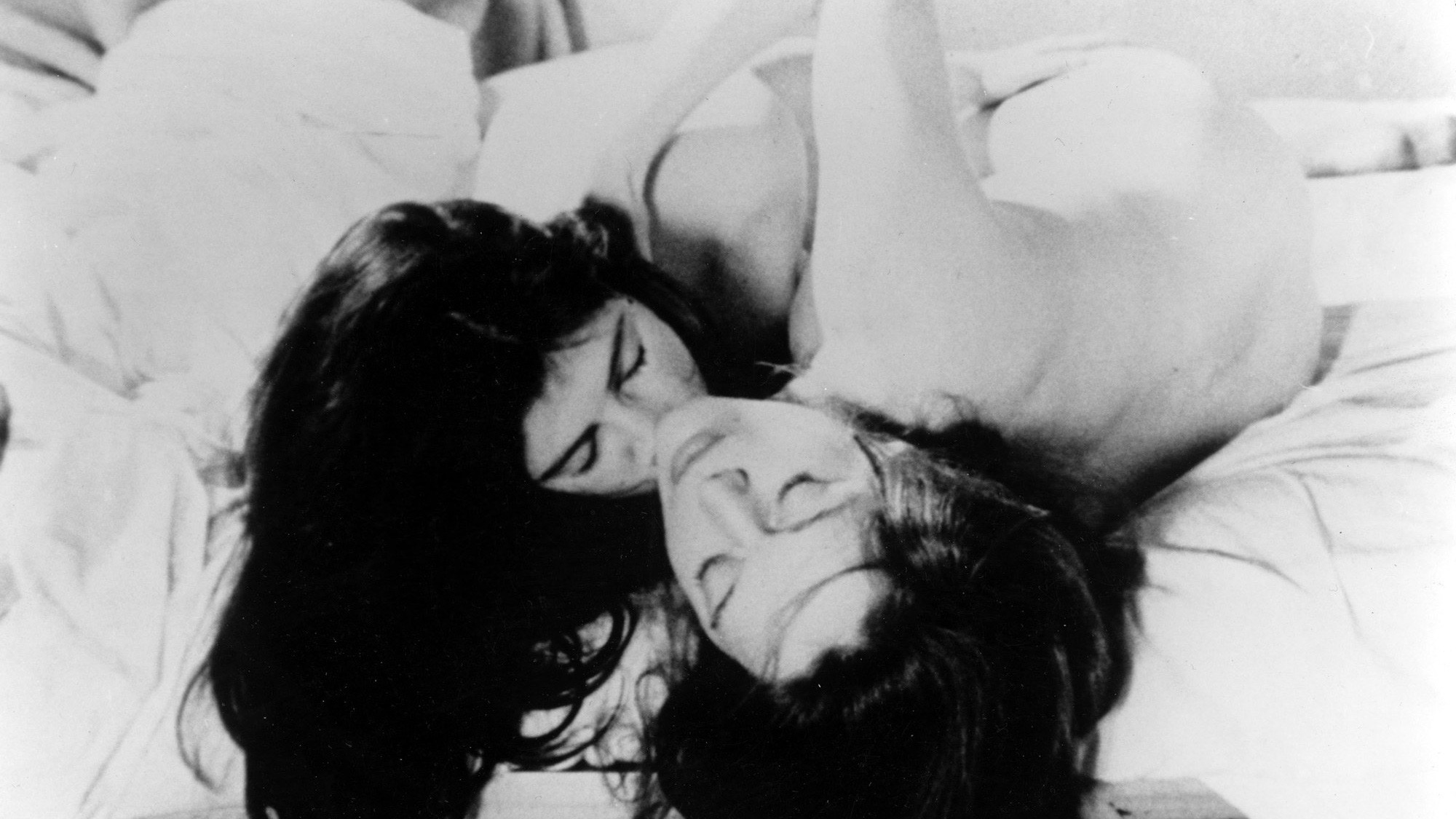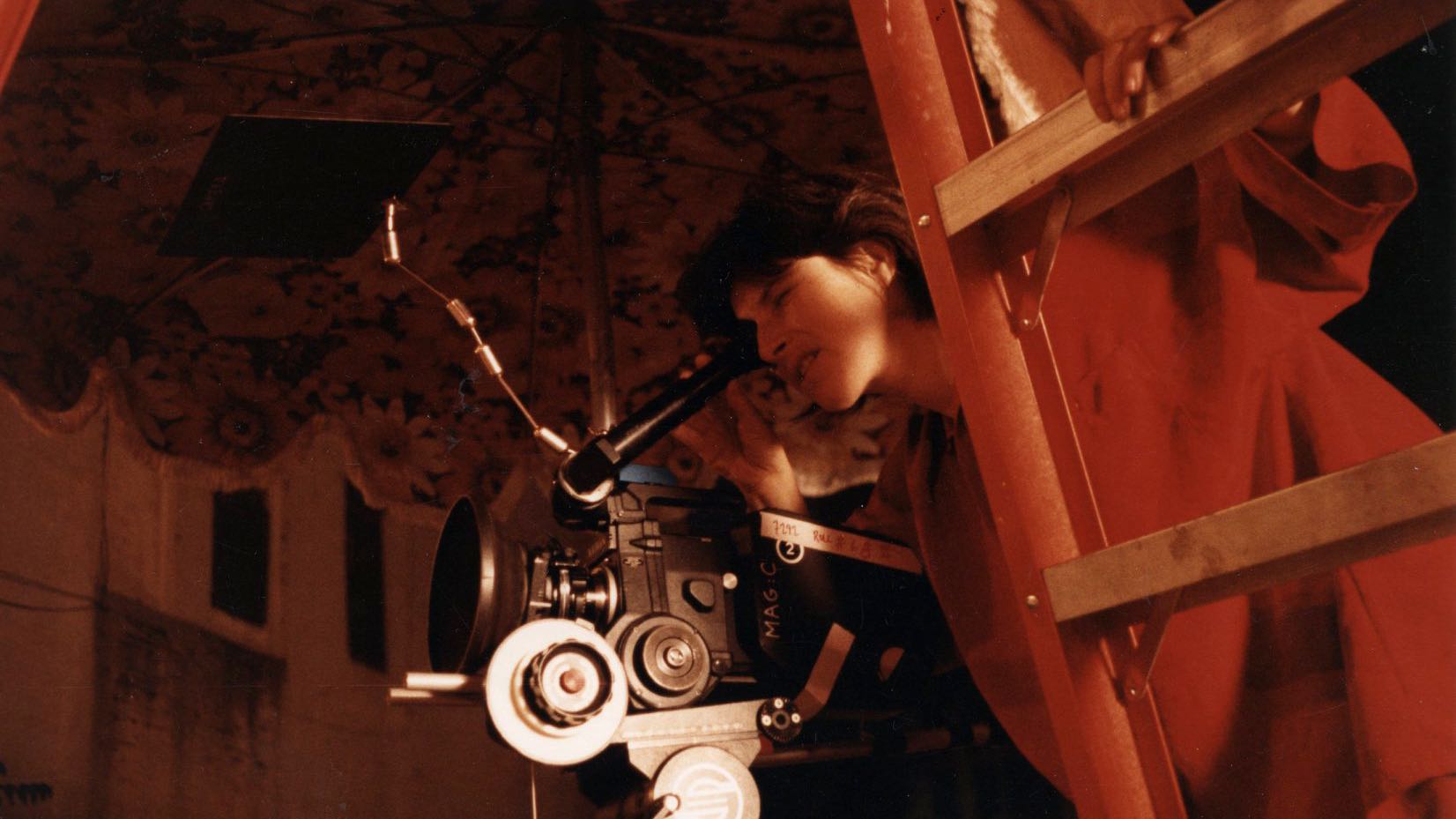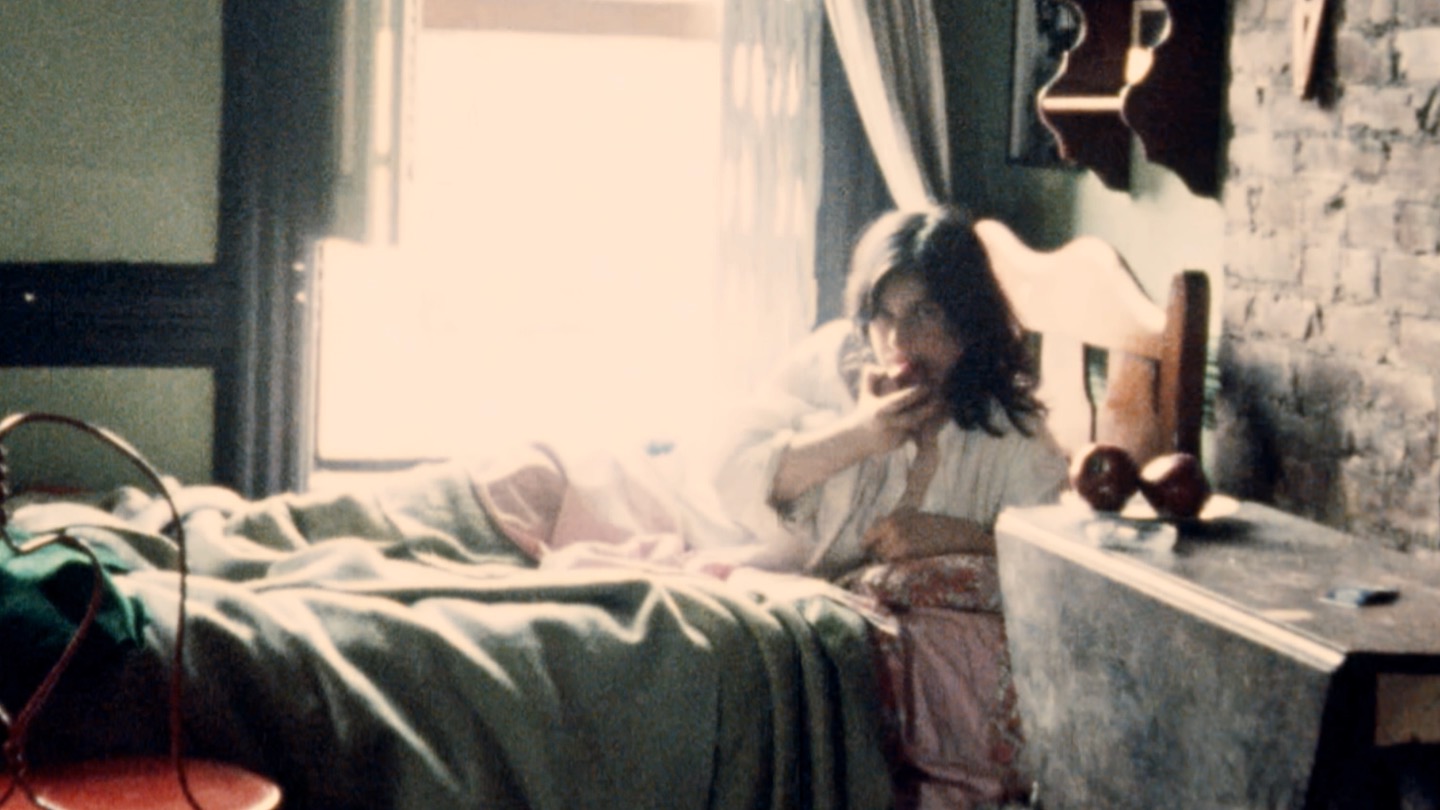This experimental documentary, filmed in one night in 1972, shows a cheap residential hotel in Manhattan. Hallways, elevators, rooms, and residents are captured in long static shots and extremely slow camera movements. There is no dialogue, no music, and no plot. Instead, the camera follows an upward trajectory through the building, from the lobby via the elevator to the roof, where New York slowly emerges in the light of dawn. What begins as a series of patient observations gradually unfolds into a carefully constructed portrait of a place. Hotel Monterey is one of Akerman’s first films, foreshadowing themes that would define her later work: time, space, and everyday life.
“A hypnotic tour of a New York hotel that proves that nighttime is Akerman time.”
British Film Institute
“This mesmerising silent travelogue around a cheap hotel, shot as if from the point of view of a ghost trapped inside, shows Akerman’s interest in the everyday alongside her disdain for reality. Filming from dusk to dawn, with Babette Mangolte behind the camera, they transform the hotel’s lobbies, lifts, bedrooms and corridors into a fluorescent, bunker-like otherworld and its inhabitants into sleepwalkers. As Mangolte said: ‘Night is where the lonely people are’.”
British Film Institue
“Through a succession of elegantly composed, silent shots – some tracking, some static – Akerman transforms a run-down Upper West Side single-room-occupancy hotel (where she had sometimes spent nights with a friend) into a site of contemplation and unconventional beauty.”
Michael Koresky / Criterion
“For Hotel Monterey she had a simple idea: She wanted to show the people who were there. I perfectly understood what she wanted to do, because it was the kind of place I had lived in during the first year I was in New York. It was a hotel for transients, and very low income people—mostly old people who were on social security and basically dying in those rooms. Each space had two rooms and one shared bathroom, and through the bathroom, if the door was kept open, you heard coughing—the old people there were often dying of emphysema—this elaborate sound of air not going through someone’s lungs. That sound is really what I remember about the hotel. But before we started, Chantal told me something about the hotel: that the people there often leave their doors open because they want to see people passing by. They don’t necessarily want to engage in conversation, but they are so lonely that they don’t want to be alone in their room. And I thought that was such a great image. That’s all she had to tell me and I was committed.”
Babette Mangolte / Notebook
“There was barely any planning: Akerman knew only that she would start filming on the hotel’s main floor and end at the top, and that she wanted to emerge from dark into light, night into day. The shoot lasted one night, approximately fifteen straight hours, during which Akerman and Mangolte would put the camera down wherever it felt right and roll until Akerman’s gut told her to stop. Akerman later explained that ‘the shots are exactly as long as I had the feeling of them inside myself’; about the overall conception, she said, ‘I want people to lose themselves in the frame and at the same time to be truly confronting the space.’ The result is minimalist yet rich: the viewer, wandering these mostly vacant hallways, elevators, and bedrooms, grows hyperaware of her or his own physical presence. A hotel is a place meant to be occupied, yet this one is largely drained of visible people, so it often seems like a way station on the road to some netherworld.”
Michael Koresky / Criterion
“The film is a remarkable feat, each Hopper-esque composition and perfectly timed edit deepening a sense of ominous alienation that feels like the antithesis of celebratory, silent-era city symphonies.”
Jake Cole / Slant
“At once a documentary and an elegant, beautiful visual poem that is as fascinated by the architecture of the building as the lives of its inhabitants.”
Museum of the Moving Image







